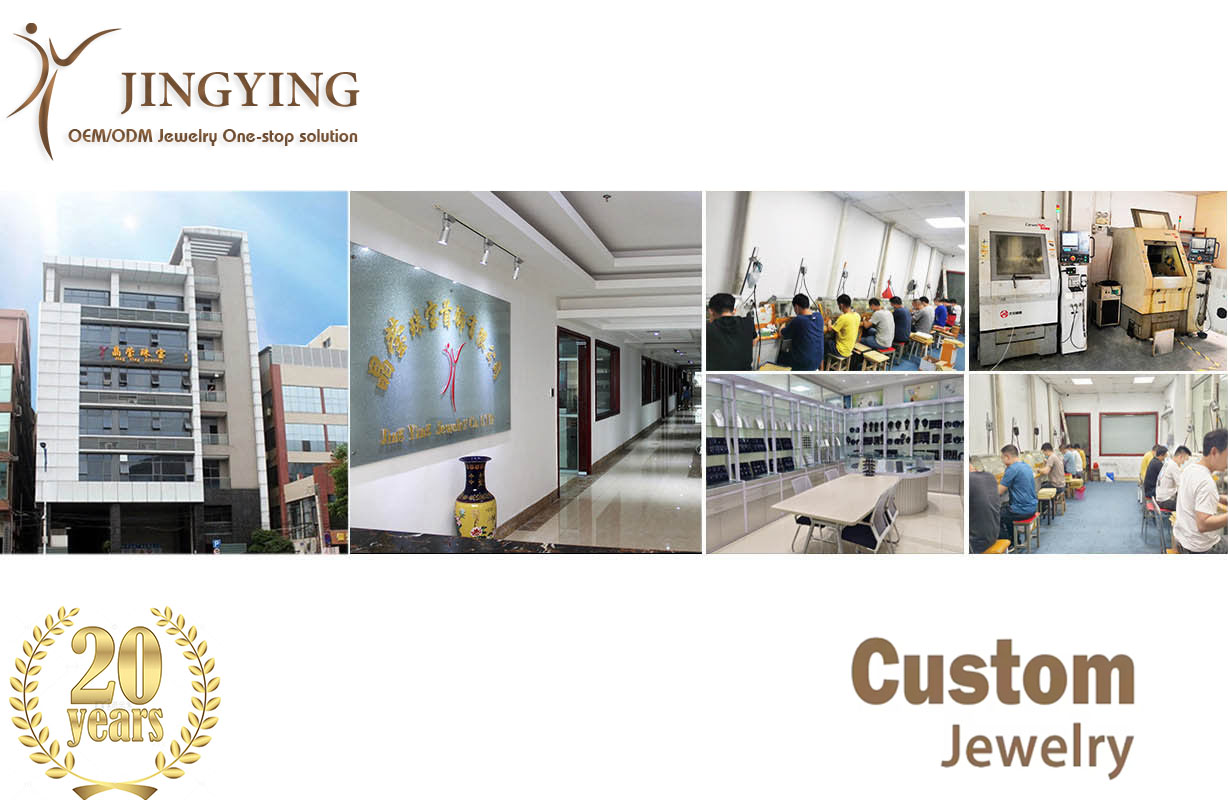Introduction
Gold plating is a widely used technique in the jewelry industry to enhance the appearance of base metals while maintaining affordability. China, as one of the world’s largest jewelry manufacturers, has developed advanced gold plating methods and strict thickness standards to ensure durability, aesthetics, and compliance with international regulations.
This article provides an in-depth analysis of gold plating techniques, thickness standards, quality control measures, and industry trends in China’s jewelry manufacturing sector.
1. Understanding Gold Plating in Jewelry
1.1 What is Gold Plating?
Gold plating is an electrochemical process where a thin layer of gold is deposited onto the surface of another metal (such as brass, copper, or silver) to improve its appearance and corrosion resistance.
1.2 Why is Gold Plating Popular?
- Cost-Effective – Provides a gold-like finish at a fraction of the cost of solid gold.
- Aesthetic Appeal – Enhances shine and luxury appearance.
- Versatility – Can be applied to various metals and jewelry types (rings, necklaces, earrings).
- Hypoallergenic Options – Gold-plated jewelry (especially with nickel-free undercoats) is suitable for sensitive skin.
2. Common Gold Plating Techniques in China
2.1 Electroplating (Electrodeposition)
The most widely used method in China, electroplating involves:
- Submerging the jewelry piece in a gold-ion solution.
- Applying an electric current to bond gold atoms to the base metal.
Advantages:
✔ Precise thickness control
✔ High-quality, even coating
✔ Suitable for mass production
2.2 PVD (Physical Vapor Deposition) Coating
A more advanced technique where gold is vaporized and deposited onto the jewelry in a vacuum chamber.
Advantages:
✔ Extremely durable (resistant to tarnish and scratches)
✔ Environmentally friendly (no harsh chemicals)
✔ Used for high-end fashion and luxury jewelry
2.3 Gold Filled vs. Gold Plated
| Feature | Gold Plated | Gold Filled |
|---|---|---|
| Gold Layer Thickness | 0.5 – 2.5 microns | 5 – 100 microns |
| Durability | Moderate (lasts 1-2 years with care) | High (lasts 5+ years) |
| Cost | Affordable | More expensive |
| Common Use | Fashion jewelry | Semi-fine jewelry |
3. Gold Plating Thickness Standards in China
3.1 International vs. Chinese Standards
| Standard | Minimum Thickness (Microns) | Common Applications |
|---|---|---|
| ISO 4523 (International) | 0.5 µm | Light-duty fashion jewelry |
| China GB/T 1690 | 0.3 – 3.0 µm | General jewelry plating |
| High-End Luxury (China) | 3.0 – 5.0 µm | Premium gold-plated jewelry |
3.2 Industry Classifications in China
- Light Gold Plating (0.3 – 0.5 µm) – Budget fashion jewelry, short-term wear.
- Standard Gold Plating (0.5 – 1.0 µm) – Mid-range jewelry with moderate durability.
- Heavy Gold Plating (2.0 – 5.0 µm) – High-end jewelry, longer-lasting shine.
3.3 Factors Affecting Gold Plating Thickness
- Base Metal (Brass, copper, and silver require different plating approaches).
- Plating Method (Electroplating vs. PVD).
- Jewelry Usage (Rings require thicker plating than pendants due to friction).
4. Quality Control & Testing Methods
4.1 Common Gold Plating Defects
- Peeling – Poor adhesion due to improper cleaning before plating.
- Tarnishing – Exposure to sweat, perfumes, or chemicals.
- Uneven Coating – Caused by inconsistent electroplating current.
4.2 Testing Methods in Chinese Factories
- XRF (X-Ray Fluorescence) – Measures gold layer thickness.
- Salt Spray Test – Checks corrosion resistance.
- Adhesion Test (Tape Test) – Ensures plating does not peel off easily.
5. Trends in Gold Plating Technology (2024-2025)
5.1 Eco-Friendly Gold Plating
- Cyanide-Free Plating Solutions – Safer for workers and the environment.
- Water Recycling Systems – Reducing industrial wastewater.
5.2 Advanced Coating Techniques
- Nanotechnology Gold Plating – Improves durability and scratch resistance.
- Rose Gold & Two-Tone Plating – Growing demand for mixed-metal aesthetics.
5.3 Consumer Preferences
- Long-Lasting Plating – Consumers prefer thicker gold layers (2.0+ microns).
- Nickel-Free Undercoats – Reducing skin allergies.
6. Leading Gold Plating Manufacturers in China
6.1 Top Production Hubs
- Shenzhen – High-tech PVD plating facilities.
- Yiwu – Mass-market electroplating factories.
- Guangzhou – Luxury jewelry plating specialists.
6.2 How to Choose a Reliable Supplier
✔ Check ISO 9001 certification
✔ Request plating thickness reports
✔ Ask for sample testing before bulk orders
7. Conclusion
China remains a global leader in gold plating technology, offering a range of techniques from electroplating to PVD coating. Understanding thickness standards and quality control measures is essential for brands sourcing gold-plated jewelry.
With advancements in eco-friendly plating and durable coatings, Chinese manufacturers continue to innovate, meeting both domestic and international market demands.
